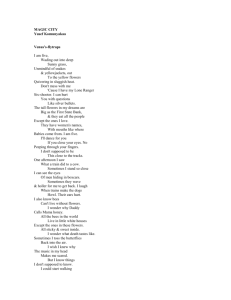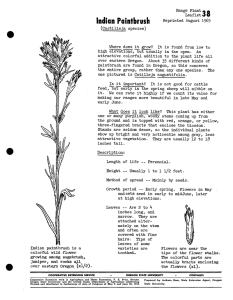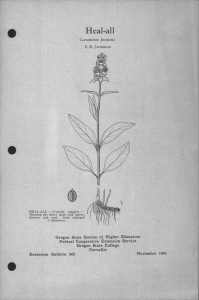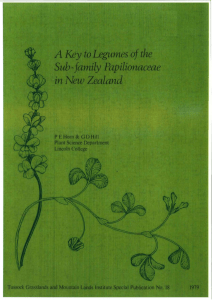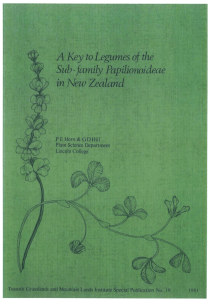Big-headed Clover
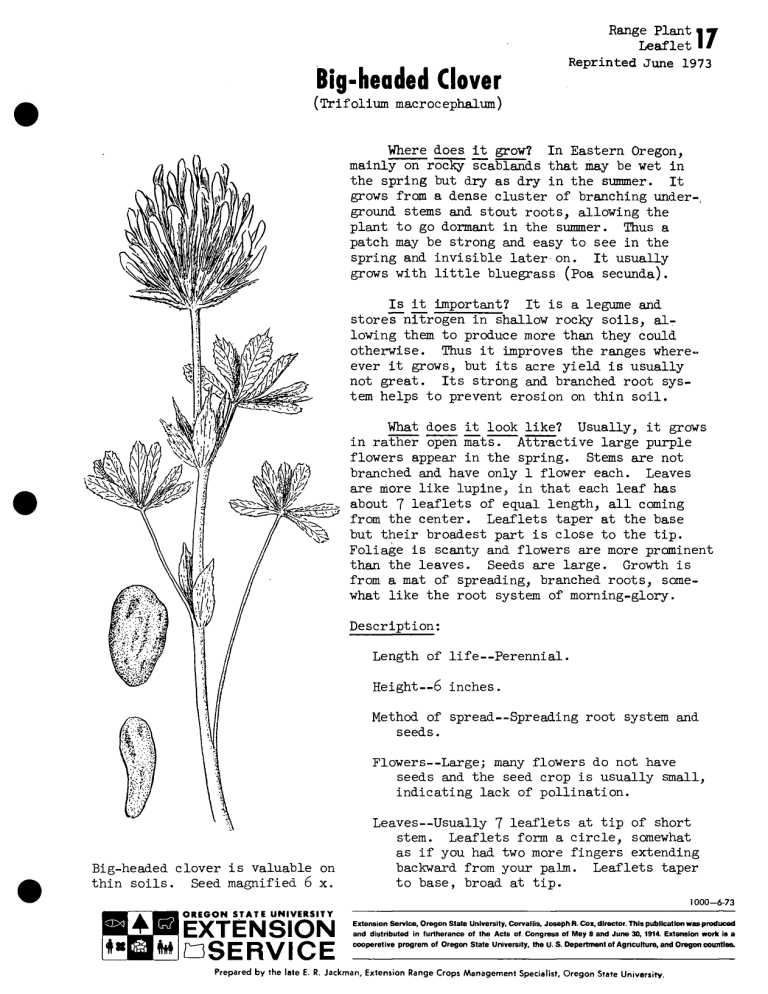
Range Plant | f
Leaflet 1/
Reprinted June 1973
Big-headed Clover
(Trifolium macrocephalum)
Where does it grow? In Eastern Oregon, mainly on rocky scablands that may be wet in the spring but dry as dry in the summer. It grows from a dense cluster of branching under-, ground stems and stout roots, allowing the plant to go dormant in the simmer. Thus a patch may be strong and easy to see in the spring and invisible later on. It usually grows with little bluegrass (Poa secunda).
Is it important? It is a legume and stores nitrogen in shallow rocky soils, al- lowing them to produce more than they could otherwise. Thus it improves the ranges where- ever it grows, but its acre yield is usually not great. Its strong and branched root sys- tem helps to prevent erosion on thin soil.
What does it look like? Usually, it grows in rather open mats. Attractive large purple flowers appear in the spring. Stems are not branched and have only 1 flower each. Leaves are more like lupine, in that each leaf has about 7 leaflets of equal length, all coming from the center. Leaflets taper at the base but their broadest part is close to the tip.
Foliage is scanty and flowers are more prominent than the leaves. Seeds are large. Growth is from a mat of spreading, branched roots, some- what like the root system of morning-glory.
Description:
Length of life—Perennial.
Height—6 inches.
Method of spread—Spreading root system and seeds.
Flowers—Large; many flowers do not have seeds and the seed crop is usually small, indicating lack of pollination.
Big-headed clover is valuable on thin soils. Seed magnified 6 x.
Leaves—Usually 7 leaflets at tip of short stem. Leaflets form a circle, somewhat as if you had two more fingers extending backward from your palm. Leaflets taper to base, broad at tip.
1000-6-73
OREGON STATE UNIVERSITY
EXTENSION
□
SERVICE
Extension Service, Oregon State University, Corvallis, Joseph R. Cox, director. This publication was produced and distributed in furtherance of the Acts of. Congress of May 8 and June 30, 1914. Extension work is a cooperative program of Oregon State University, the U. S. Department of Agriculture, and Oregon counties.
Prepared by the late E. R. Jackman, Extension Range Crops Management Specialist, Oregon State University.
Roots—Shallow, matted, a large number of long stolons that send up several stems each.
\ *
^auji
#% \ k
.
/ b*
f 'PC'"
1
♦
-T
l ¥1//
Shallow stolons send up stems and create a thin mat of clover.


